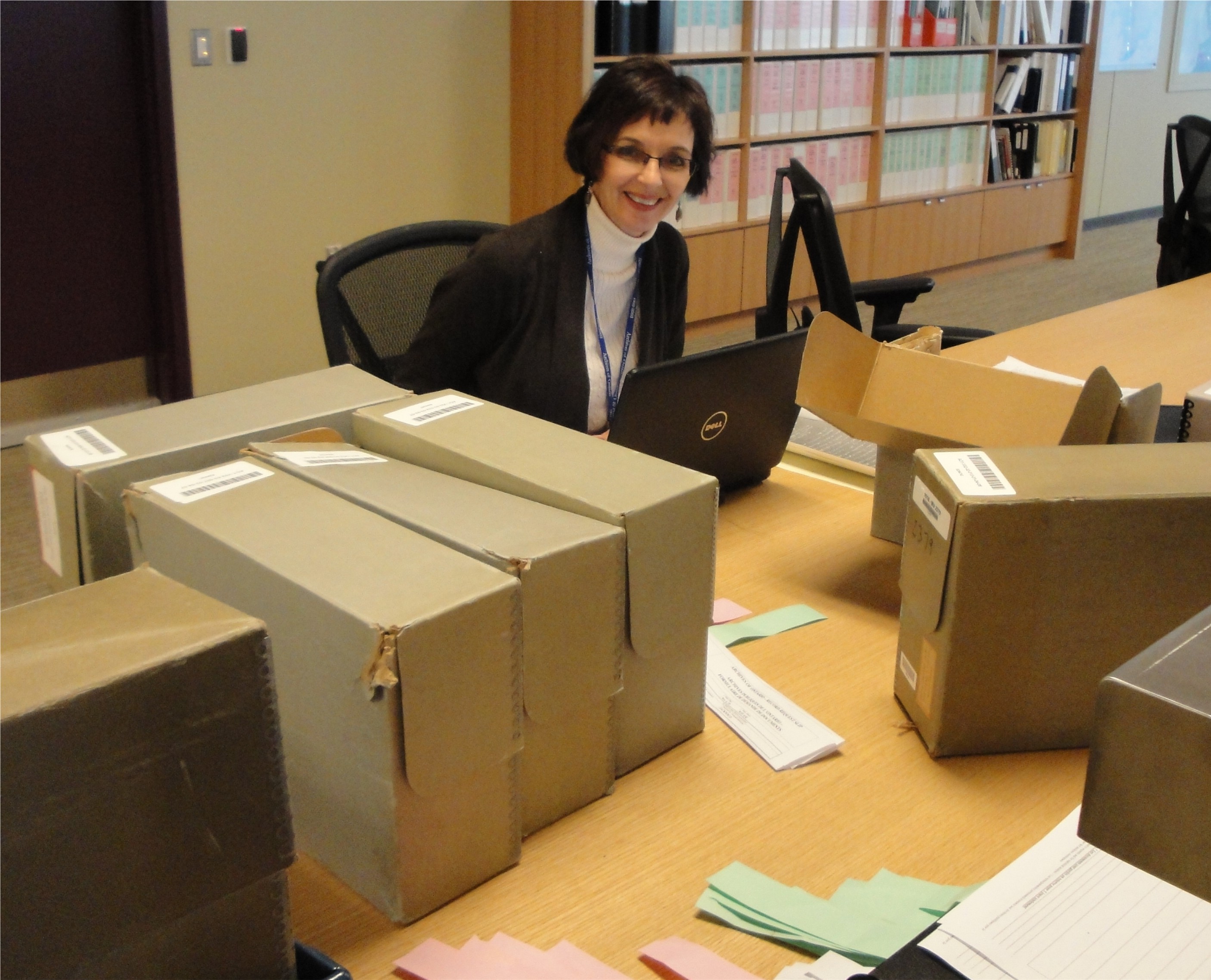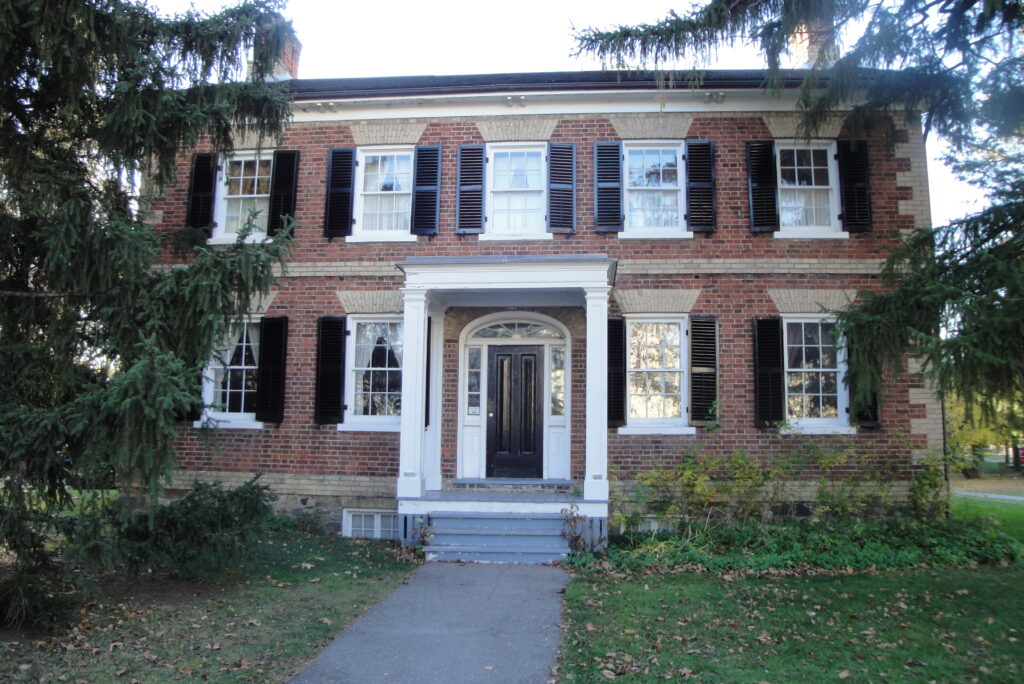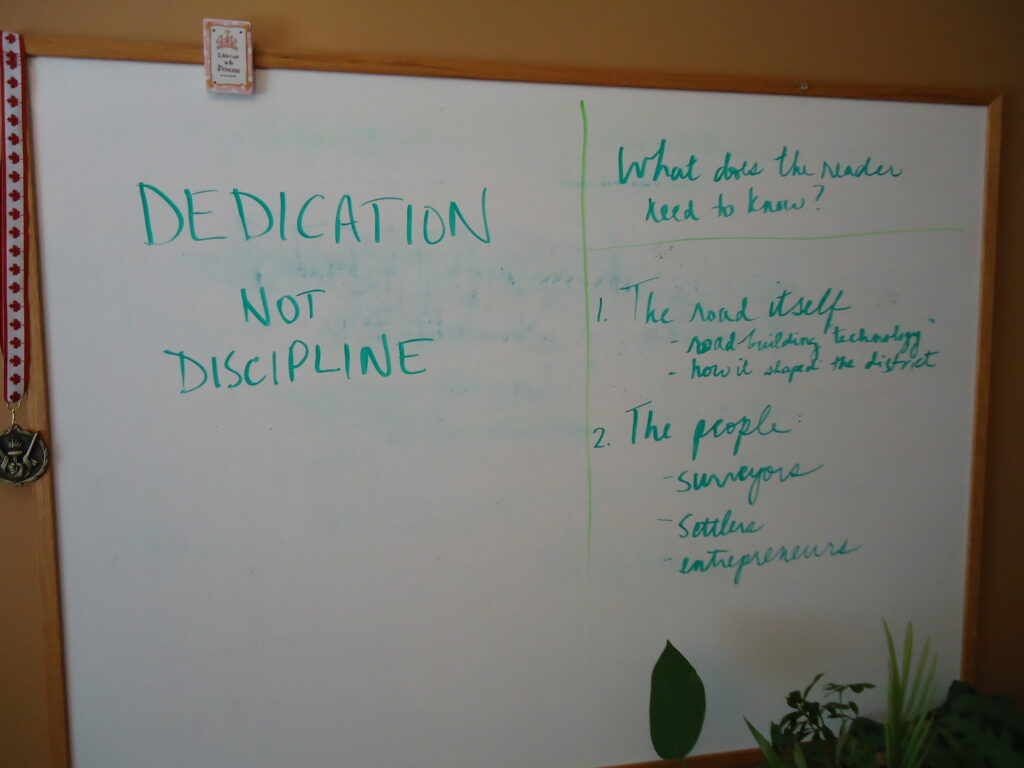INTO THE ARCHIVES, PART 2: In Which I Find Some Great Material and Lose My Balance
Last week, Mr. Busy and I spent four glorious research days in Toronto. I say glorious because:
- I got to read the hand-written diaries and field notes of several Muskoka Road surveyors (and found out the black flies were just as horrific in Muskoka in the 1850s as they are today.)

- We got to go to surveyor David Gibson’s house, which still stands in North York and which in 1851 was a 5-hour horseback ride from Toronto.

- I found the only copy in Ontario of a guidebook called, “The Ferguson Highway: Beauty Spots and Points of Interest in Northern Ontario”, published in 1929. (This was at the Toronto Reference Library and yes, I’ll admit that only another researcher would understand my delight.)
We also went to see the new smash musical “Priscilla, Queen of the Desert,” which is FABULOUS, although way outside the scope of this blog.
What I want to tell you is this: I should have taken better care of my physical self. Four days of hunching over a microfilm reader has pinched all the muscles in my neck and upper back and aggravated my arthritis, which I have in every joint in my body. I know better – but got caught up in the research.
So aside from a trip to the gym immediately upon our return and a 9-1-1 call to my massage therapist, I have renewed my vow to maintain a healthy balance while writing this book. For me, a healthy balance means that every day of the week I:
1. Do work on the book, then
2. Do something physical, then
3. Do something else.
I think lack of balance is an occupational hazard for writers. The work is sedentary, and the nature of the material we work with – whether researching or creating a fictional world – is so seductive, we are prone to sitting at our desks, living happily in our heads, for way too long. It takes discipline to stand up and walk away from something that is so very interesting.
“Dedication, not discipline” it says on my whiteboard. I meant that as a reminder to myself to not get too intense about the project; to make sure I enjoy the process. But I’m thinking that in another context, discipline is not such a bad idea. A little discipline… a little dedication to staying balanced and physically healthy, is exactly what I need.



